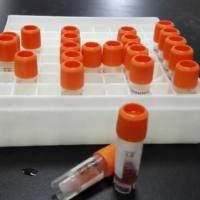UroVysion Multiprobe FISH in Urinary Cytology
互联网
688
Urinary cytology is used in combination with cystoscopy for the diagnosis of primary bladder cancer and to monitor the patients for early detection of recurrence after initial transurethral resection. Urinary cytology is highly specific for the detection of poorly differentiated urothelial carcinoma (G3), but notoriously unreliable in case of low-grade urothelial tumors (1 –3 ). The sensitivity of urinary cytology for the detection of low-grade urothelial tumors is as low as 15–25% (1 ,4 ). Because of a broad cytological overlap between reactive urothelial changes and low-grade urothelial neoplasia, cytologists often have to capitulate by assigning samples to the uncertain and unrewarding category of cellular atypia. Several attempts have been made to improve the detection of neoplastic cells in urinary specimens (5 –8 ). Common drawbacks of these tests include high false-positive rates resulting from benign conditions and lack of reproducibility if applied in different laboratories. Chromosomal alterations are likely to be more tumor-specific than alterations of protein expression, as they occur frequently in bladder cancer but have only exceptionally been described in non-neoplastic conditions (9 –11 ). Fluorescence in situ hybridization (FISH) allows for visualization of specific DNA sequences and can, therefore, be used for quantitation of chromosomes and genes, including aneusomies, chromosomal deletions, or amplifications (12 ,13 ). Applicability to interphase nuclei makes FISH an ideal tool for chromosomal analyses in cytopathology (14 ).








